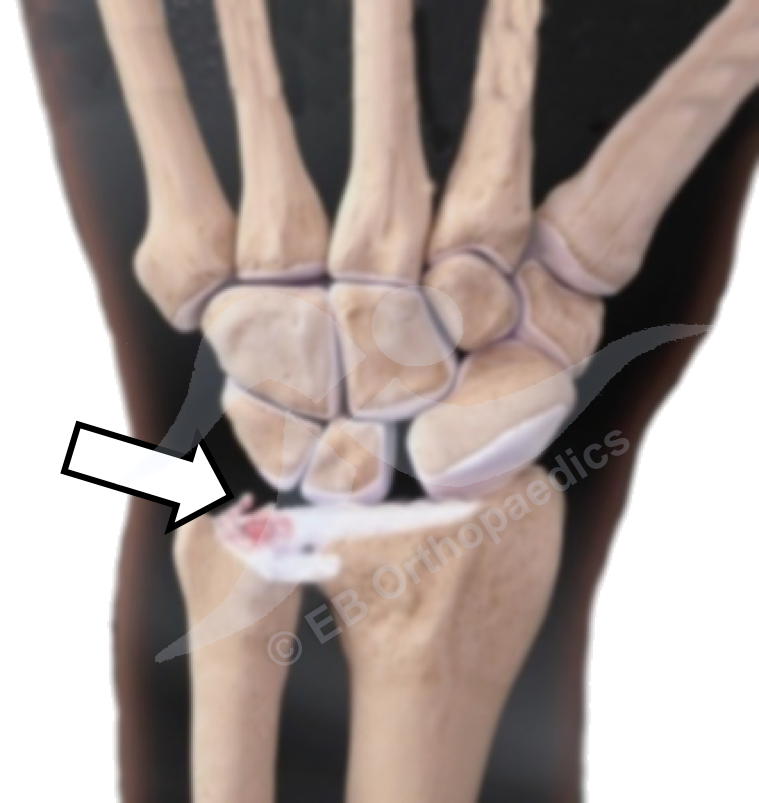TFCC injury & tears

The Triangular Fibrocartilage Complex (TFCC) is a structure comprising various ligaments and soft tissues that connect the end of the ulna (one of the forearm bones) to the radius (the other forearm bone) as well as some of the small bones in the wrist. It provides support and helps in the smooth wrist movements.
A fall onto an outstretched hand or a sudden jerking of the wrist can cause damage to the TFCC. This usually only constitutes a small tear but in some cases the TFCC can be torn off the bone where it attaches, although this is usually associated with a more significant overall injury.
As well as an acute injury, the TFCC can also be damaged through repetitive actions. It can also thin and become degenerate with increasing age.
The main symptom is pain, which is usually on the inside of the wrist (the side with your little finger) although it can be more generalised. The pain tends to be most pronounced with twisting movements such as turning a door knob or with loading the wrist such as lifting a heavy saucepan. Some people report clicking as well as a feeling of not trusting the wrist and it giving way which usually results from sudden pain.
Often rest and a splint is enough to settle the pain, together with painkillers. You may find a steroid injection helpful. This may be given if there is uncertainty as to how much of your symptoms are coming from the wrist and how much from elsewhere.
The optimal treatment depends on the type and extent of the tear that you have. In some cases the TFCC can be repaired, particularly if it has come off the bone. Usually the tear is smoothed (debrided) so it does not catch against the joint surfaces which can be the source of pain.
The surgery is usually performed as an arthroscopic (keyhole) procedure, although in some cases an open (small cut at the wrist) procedure is undertaken.
The specific physiotherapy advice will vary depending on the surgery undertaken and will be discussed with you prior to your surgery.
People usually have an improvement in both pain and strength in the wrist, however in some cases symptoms are ongoing.